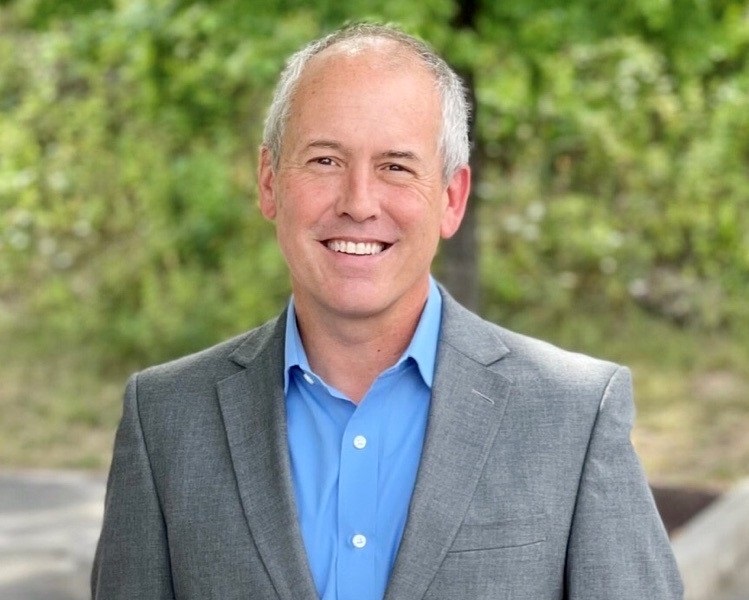JA leader Paul Kappel Jr. talks about the important theme of the Satell Institute’s next conference – education and workforce readiness – as well as SI’s exciting expansion into Baltimore.
When an organization has been around for more than a century, it’s clearly doing something right. For Junior Achievement – which was started in 1919 – that something is simple: giving young people an education in financial literacy, entrepreneurship and work readiness, opening their eyes to the possibilities ahead of them.
And members of the business community are vital to that mission, not only supporting JA’s own programs financially, but volunteering and sharing their personal and professional skills with students as they learn about everything from money management and career opportunities to business planning and having an entrepreneurial mindset.
In this conversation, Paul Kappel – former head of Junior Achievement of Southeastern Pennsylvania and now the leader of Junior Achievement of Central Maryland – talks about the theme of the Satell Institute’s upcoming Spring 2023 Private CEO Conference: how corporations and nonprofits can work together on the hyper-important task of education and workforce readiness. Kappel also shares his excitement for the Satell Institute’s newest chapter in Baltimore, which he’s helping to spearhead.
When I talk about Junior Achievement’s mission, I say…
… we’re an economic education organization. We work with students, in theory, as early as kindergarten. But our sweet spot tends to be more in middle and high school, and most recently, expanding into the 16-to-20-year-old range — particularly because work readiness and helping to build career pathways in cities like Philadelphia and Baltimore is just becoming so much more important.
We want to give young people both the skillset and the mindset to transform their communities. Embedded within that is that we want every student to graduate from high school either ready for college or ready for work.
JA has changed in recent years because…
… we used to be much more of an in-school organization. The majority of our programs were weighted toward elementary school. But you’ve really started to see a shift in our impact over the last 10 years to middle and high school.
The reason for that is two-fold. One: If a student is going to drop out of high school, that decision really has been made by middle school. And so we want to change that trajectory.
The other thing is that you see students have much more of a say into what their high school courses will be. They’re making decisions when they start freshman year that are going to put them on a path, so the more knowledge and experience they have, the more they see what the potential options are.
Corporations play a huge role in JA because…
…unlike a lot of philanthropies, the overwhelming support that Junior Achievement gets both in dollars and people is from the corporate sector. There’s an investment they’re making, quite frankly, in their future workforce, and you’re seeing that become much more pronounced over the past 5-to-10 years.
Both education and the community have taken more of a pathway approach – how do we build opportunities for young people that are more sequenced, that are more centered around experiential learning? So not only does Junior Achievement happen because a volunteer comes to the classroom, but more and more we’re finding experiential learning opportunities outside that classroom. Whether in a physical space, like the facility we have in Baltimore, or in the virtual space.
Business loves to support JA because…
…there’s data out there to show that CSR very much leads to employee retention and job satisfaction. If you work for a company that you feel like is doing good in your community, you’re just more likely to stay. You’re more likely to do a better job.
One of the things we talk to our partners about is what return on investment they’re looking for. And we understand they need that. There’s a lot of demand for resources, so just like any other decision an organization is making, they want to see: what is the return on investment in the community? What is the impact on students? What are the opportunities for associates? That’s always been the sweet spot of Junior Achievement because we have employee volunteer engagements I would argue are second to none — not only in terms of impact on the community, but the level of support we provide to make sure it’s a good experience for that volunteer.
JA got involved with the Satell Institute early on because…
…when Ed Satell started to talk about the thought process around what the Satell Institute would stand for, we could show how that would work — the nonprofit community and the corporate community coming together in a sustainable way.
Our partnership with Bank of America really showed the impact that an intentional, directed multiyear strategy can have on a nonprofit partner. For some companies, it’s an investment that may be a little bit different than what they’ve done before – a four year commitment of $25,000 per year. But it’s powerful.
I wanted to be part of the expansion into Baltimore because….
…I’ve seen firsthand what the Satell Institute has done to really break down barriers to bring the community together and have the conversations about how we can collectively make a change in Philadelphia. I watch CEOs sit at these tables during the conference breakouts and talk about what’s working in their organization and maybe how another CEO would take that back to their organization.
And also the impact on nonprofits. I think one of the benefits of what the Satell Institute has done is to bring nonprofit leaders together in a way that just doesn’t happen a lot. On the surface, Junior Achievement may not have a lot in common with Philabundance, and yet, sitting there and listening to how they’ve dealt with a certain issue gives you an opportunity to say, how can I bring that sort of thinking to my organization? That’s been huge.
One of the things that Baltimore and Philadelphia have in common is…
…there’s a lot of interconnectivity. As large a city as Philadelphia is, it’s also a very small. It’s exactly the same way here in Baltimore. There’s a community engagement and a feeling for the community that’s consistent in Baltimore and Philadelphia.
One of JA’s partners here is Whiting-Turner, and their CEO, Tim Regan, volunteers with us. He goes into high schools and talks about his experiences as a young person growing up in Baltimore. There’s no substitute for that. JA’s secret sauce for over 100 years has been those community volunteers who’ll go and share their experience with young people and hopefully give a young person an opportunity to see themselves in a different light. And maybe start to say, hey, I can do this. I can own this. I can set that path. What do I need to do to get there?
That volunteer engagement has not only been important to JA; I think that’s been such a huge piece of what the Satell Institute has always stood for. There’s sweat equity that needs to be part of this. I think Ed has always personified that. There’s a commitment. There’s an intentionality. Not just for financial support, but for sweat equity as well.


